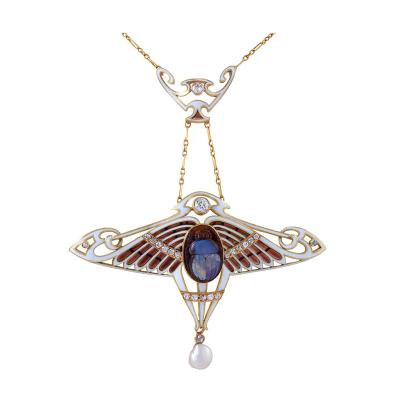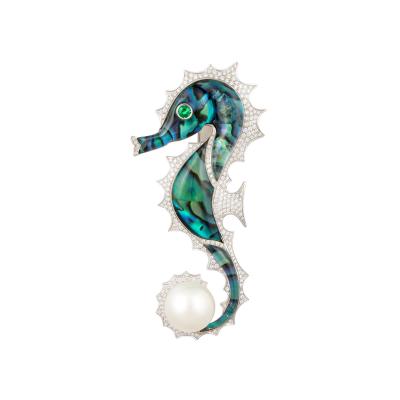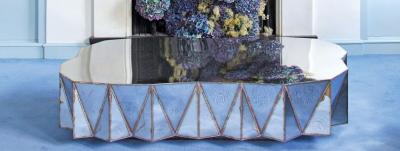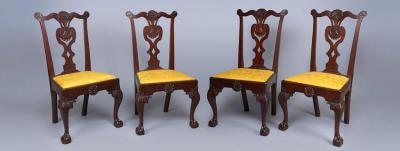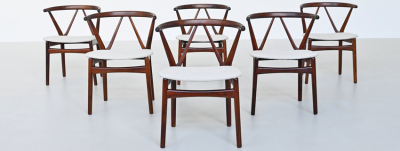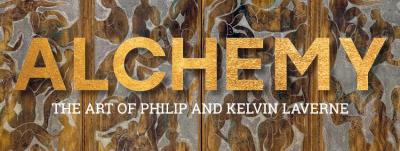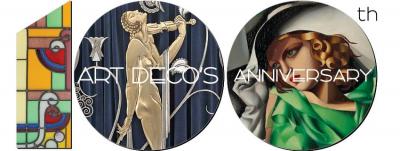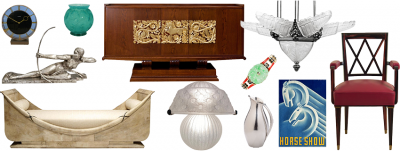Maker & Muse: Women and Early Twentieth Century Art Jewelry
The first decades of the twentieth century ushered in a period of great change around the world, sparking unprecedented innovation in all areas of the arts. Inspired by the broader art movements of the day and their unique cultures and contexts, jewelry makers in the world’s design centers wrestled with modernity. Many broke from tradition to create new styles as a reaction to the conformity of mass-produced goods throughout the Industrial Revolution and the changing role of women in society. Their alternative designs — boldly artistic, exquisitely detailed, handcrafted, and inspired by nature — came to be known as art jewelry.
 | |
Unknown Maker, Belt Buckle, ca. 1900. Parcel-gilt copper alloy. Collection of Richard H. Driehaus. Photograph by John A. Faier, 2014, © The Richard H. Driehaus Museum. |
Featuring exquisite works by renowned artists such as Louis Comfort Tiffany, Charlotte Newman, and René Lalique, Maker & Muse: Women and Early Twentieth Century Art Jewelry, opening January 29, at the Henry Morrison Flagler Museum in Palm Beach, Florida, celebrates the impact of women on art jewelry. Maker & Muse features more than two hundred pieces of jewelry created in the early decades of the twentieth century. The works represent five different areas of art jewelry design and fabrication: the Arts and Crafts movement in Britain, Art Nouveau in France, Jugendstil in Germany and Austria, the jewelry works of Louis Comfort Tiffany in New York, and American Arts and Crafts in Chicago. Each of the designers represented in Maker & Muse, though greatly influenced by their own individual contexts, shared a similar aesthetic ideal: to produce inventive jewelry with rich materials, intricate craftsmanship, and dramatic forms.
The jewelry and accessories on display also celebrate the role that women played in the creation and design of art jewelry, both as muses to male designers, and, for the first time, as designers and makers in their own right. Works created by both men and women are exhibited together to highlight commonalities, while also illustrating each maker’s distinctive style. In these masterpieces, the female aesthetic predominates — even in regions or movements that saw few women physically present in the workshop. For instance, not only did artisans fashion many of their works to accentuate the stylish clothing and beauty of the “new” woman, they also often represented her within the work itself.
GREAT BRITAIN
 | |
Ella Naper (English, 1886–1972), Lily-Pad Hair Combs, ca. 1906. Horn, moonstone. Collection of Richard H. Driehaus. Photograph by John A. Faier, 2014, © The Richard H. Driehaus Museum.
The Arts and Crafts movement flourished in Great Britain between 1880 and 1920 as a reaction to Victorian styles. The goal of its jewelry makers was to create handcrafted jewelry imbued with social and political implications. The movement was particularly responsive to the changing role of women in the modern world. By the 1890s, the rise of industrialization created a class of women with time on their hands. Crafts were considered appropriate female activities, and for some, both an acceptable course of study and a way to make a living. Among the first generation of female Arts and Crafts jewelry artists was Ella Naper, who attended Camberwell School in South London, and after graduation opened a shop in Branscombe, Devon, with her teacher, Fred Partridge. After her marriage to Charles Naper they moved to an artist’s colony in Lamorna, Cornwall, where she continued her work. |
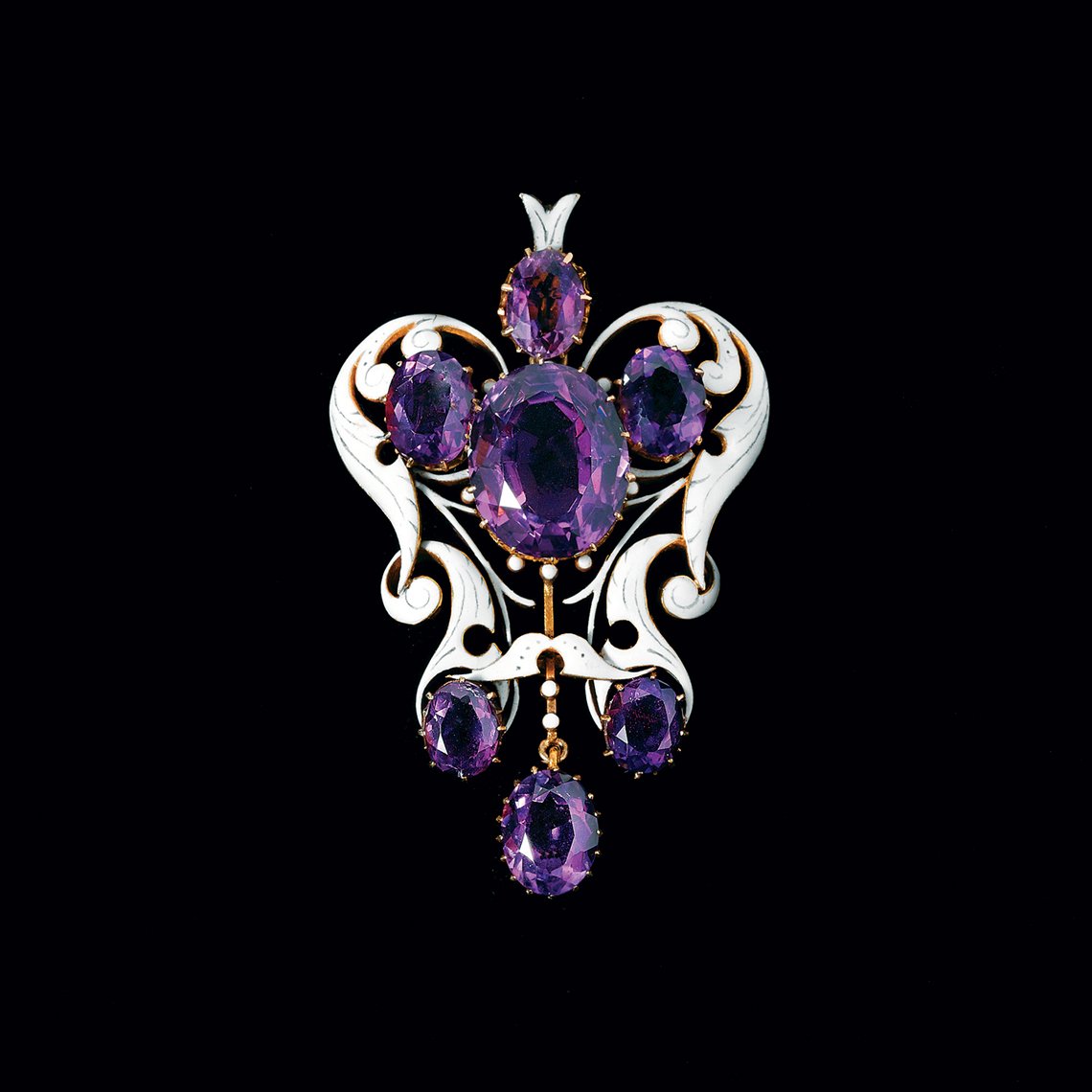 | |
Charlotte Newman (English, 1840–1927), Pendant, 1884–1890. Gold, amethyst, enamel. Collection of Newark Museum. Photograph by John A. Faier, 2014, © The Richard H. Driehaus Museum.
Charlotte Newman, also known as Mrs. Philip Newman, was the first English woman to be recognized as a jeweler in the second half of the nineteenth century. She began by assisting well-known revivalist jeweler John Brogden in the 1860s, and after his death in 1885 established her own workshop until about 1910. Newman did not confine her work to any one style. Her success in the traditionally male-dominated profession inspired many more women in the Arts and Crafts movement to become jewelers. |
-.jpg) | |
Attributed to the Guild of Handicraft, Necklace, ca. 1900. Gold, sapphire, enamel. Collection of Richard H. Driehaus. © 2014 Artists Rights Society (ARS), New York / ADAGP, Paris. Photograph by John A. Faier, 2014, © The Richard H. Driehaus Museum.
The Guild of Handicraft, London, was one of the earliest proponents and makers of Arts and Crafts jewelry, as well as metalwork, bookbindings, and other objects. Structured like the artisan guilds of medieval times, the Guild of Handicraft was founded by architect and metalsmith Charles Robert Ashbee (English, 1863–1942) to teach young men of impoverished circumstances how to make a living in metalwork, furniture, and bookbinding. Ashbee was a key player in the popularity of jewelry as part of the Arts and Crafts movement, and the jewelry produced by his guild is among the earliest made in the style. The Guild inspired other collectives, such as the Artificers’ Guild. By banding together to work and sell their wares, the guilds made it possible for jewelers to have a reliable conduit to their public. |
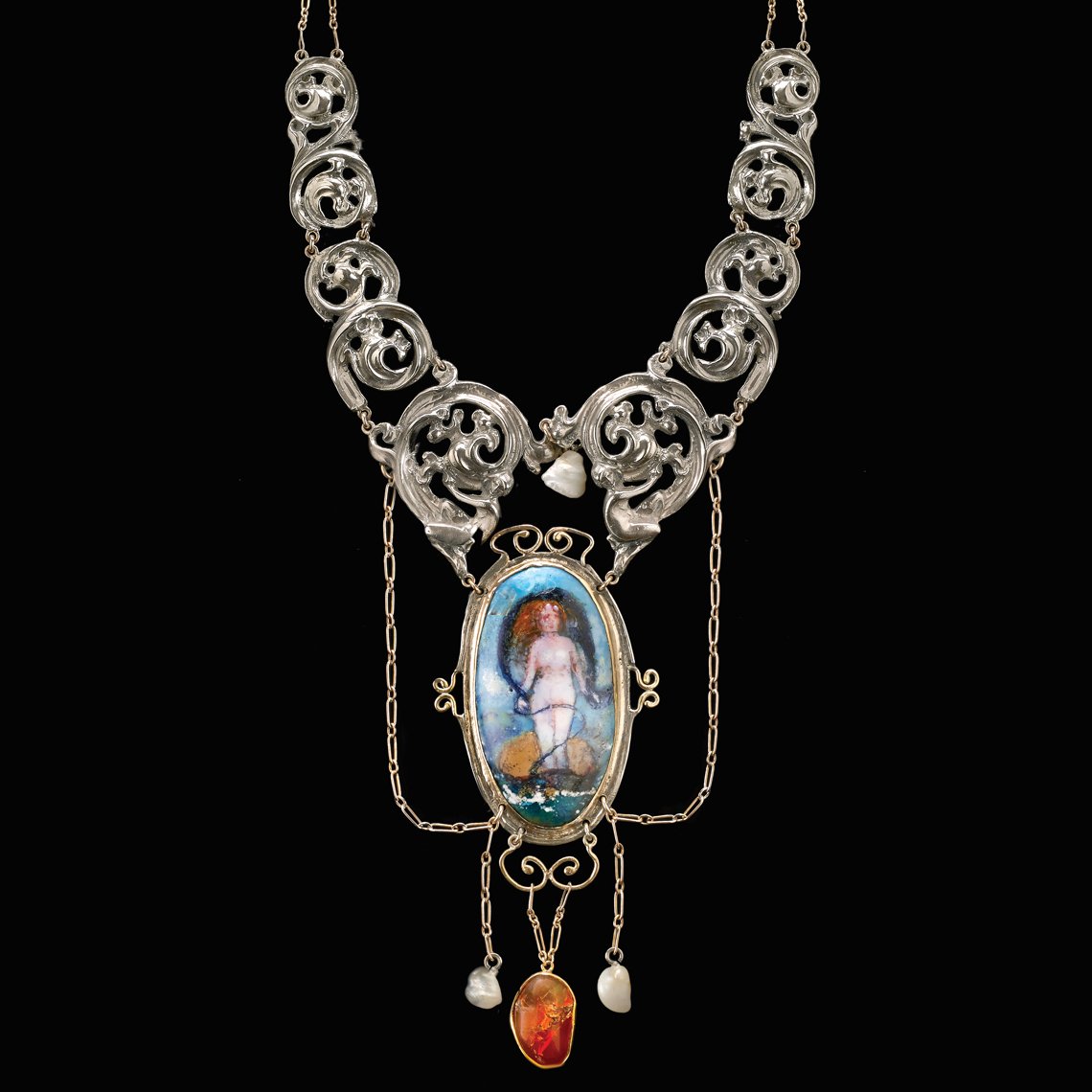 | |
Joseph A. Hodel (English, 1873–1930), Venus Necklace, ca. 1905. Silver alloy, gold alloy, enamel, fire opal, pearl. Collection of Richard H. Driehaus. Photograph by John A. Faier, 2014, © The Richard H. Driehaus Museum.
The male jewelry designers of the British Arts and Crafts movement had, for the most part, originally trained as architects and artists and then became interested in metalworking as another medium to express their talents. Jewelry offered them a platform that made their work visible and saleable. While talented women designers and jewelry makers emerged during the early twentieth century, an equal number of men became known for their jewelry designs to complement the stylish clothing worn by women in artistic circles. Necklaces, brooches, waist clasps, cloak clasps, and sets of buttons were common accessories. Nature was a favorite subject, following the lead of William Morris (1834–1896), widely acknowledged as the father of the Arts and Crafts movement, and the noted art critic John Ruskin (1819–1900). These nature-inspired motifs were sometimes fashioned from enamel, such as the Venus Necklace by Joseph Hodel of the Bromsgrove Guild. |
FRANCE
 | |
Joë Descomps (French, 1872–1948), Three Graces Pendant, ca. 1900. Gold, plique-à-jour enamel, diamond, pearl. Collection of Richard H. Driehaus. Photograph by John A. Faier, 2014, © The Richard H. Driehaus Museum.
Known for its curvaceous, sinuous lines, Art Nouveau jewelry took inspiration from what was deemed by many as the highpoint of French decorative arts — eighteenth-century Rococo design. It also drew heavily on nature, including both flora and fauna motifs. Masters like René Lalique and his peers often used nontraditional materials such as horn and special enameling techniques to create objects of staggering beauty. For the Three Graces Pendant, Joë Descomps utilized plique-à-jour enamel, which literally means “letting in daylight.” A vitreous enameling technique considered extremely difficult to master, the enamel is applied and then the backing removed to allow light to shine through the translucent enamel. |
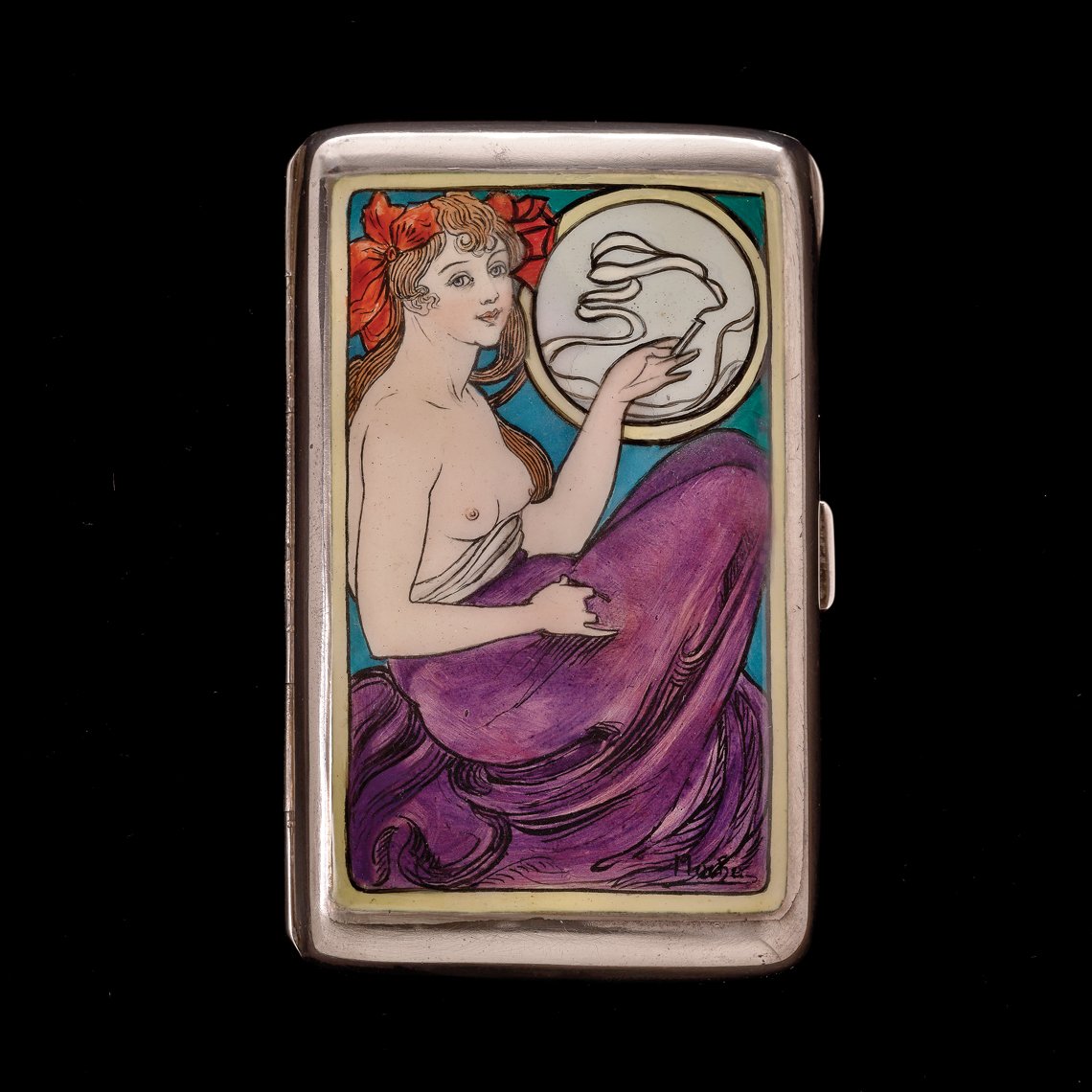 | |
Alphonse Mucha (Czech, 1860–1939), Cigarette case, n.d. Silver, enamel. Collection of Richard H. Driehaus. Photograph by John A. Faier, 2014, © The Richard H. Driehaus Museum.
The “woman as muse” motif, which embraced the opposing archetypes of gentle female and seductress, was a common theme in Art Nouveau jewelry. Male designers wrestled to reconcile their fascination and fear regarding the newly emergent modern woman in their art. Alphonse Mucha frequently depicted women in both roles in his graphic and jewelry designs. The Czech-born Mucha studied in France as a young man, where he found success as a commercial graphic artist after being discovered by the actress Sarah Bernhardt. In addition to his posters, he also designed jewelry and other decorative art objects before turning to painting later in his life. Mucha’s bold jewelry designs appealed to Bernhardt, who commissioned pieces for the stage and for personal use. |
AUSTRIA & GERMANY
 | |
Karl Rothmüller (German, 1860–1930), Mermaid on Coral Brooch, ca. 1900. Gilded silver, coral, pearl. Collection of Richard H. Driehaus. Photograph by John A. Faier, 2014, © The Richard H. Driehaus Museum.
Art jewelry produced in Germany and Austria at the dawn of the twentieth century came under the moniker Jugendstil (Youth Style). Influenced by their counterparts in Britain, France, and elsewhere, Jugendstil designers drew inspiration from nature, sometimes portrayed realistically, as in English Arts and Crafts jewelry, and sometimes borrowing from the curvilinear lines and female forms of Art Nouveau jewelers. This mermaid brooch by German goldsmith Karl Rothmüller takes its inspiration from the work of the French Art Nouveau. |
 | |
Josef Hoffmann (Austrian, 1870–1956) and Berthold Löffler (Austrian, 1874–1960), the Wiener Werkstätte (1903–1932), Hostess Pin, ca. 1907. Enameled nickel silver. Collection of Richard H. Driehaus. Photograph by John A. Faier, 2014, © The Richard H. Driehaus Museum.
The Secessionist style was a far more geometric form of Jugendstil. It was developed by artists who were often trained architects or painters, some of whom left established art groups to create alternative collectives. One of the most important evolutions of the Vienna Secession was the Wiener Werkstätte (Vienna Workshop), a cooperative of architects, artists, and designers, founded in 1903 by Josef Hoffmann and Koloman Moser. The Werkstätte’s artisans sought to collaboratively design complete environments for its artistically-minded clients, including architecture, interior wall coverings, furniture, and even the inhabitants’ clothing. This pin was designed for the hostesses at the avant-garde Cabaret Fledermaus (The Bat), which opened in Vienna in October 1907. The club’s interior décor, contents, and costumes were all designed by the Wiener Werkstätte. Gustav Klimt (1862–1918), a founding member of the Vienna Secession, was one of the artists involved in the design of the Cabaret, which closed in 1913. |
NEW YORK CITY
 | _0.jpg) | |
Louis Comfort Tiffany, Necklace, ca. 1918. 18 karat gold, platinum, tourmaline, diamond, natural pearl. Collection of Elizabeth Driehaus. Photograph by John A. Faier, 2014, © The Richard H. Driehaus Museum.
Louis Comfort Tiffany is best known for the beautiful glass vases, lamps, and leaded windows made by his firms. Tiffany, however, is also celebrated for his creation of some of the most stunning art jewelry of the early twentieth century. He began his jewelry workshop in 1902, the same year his father, Charles Lewis Tiffany, founder of Tiffany & Co., died. A progressive thinker and entrepreneur, in addition to employing women in his Women’s Glass Cutting Department, Tiffany hired two women to run his jewelry workshop — first Julia Munson, and later, Meta Overbeck. The extent of their contributions to the actual design of the jewelry is unclear, although records indicate that they designed at least some of the pieces, and all works came under their supervision for fabrication. | ||
 | |
Mrs. W.H. (Elinor) Klapp (American, 1845–1915), Brooch, ca. 1895–1914. Carved moonstone, silver or platinum. Collection of the Bronson Family. Photograph by Firestone and Parson.
The Arts and Crafts movement in the United States took hold in many places, with Chicago and to some extent other parts of the Midwest, distinguishing itself as one of the most important and prolific centers. Perhaps most significantly, Chicago had a great number of women producing jewelry in the Arts and Crafts style. Elinor Evans Klapp, the wife of a successful dry goods merchant, took up jewelry design in her early forties. She soon made up for lost time by launching herself as one of the largest exhibitors in Chicago’s Arts and Crafts shows, and by sending forty pieces to the Paris Exhibition of 1900. She personally designed her jewelry, but had it fabricated by others. By the time she moved to New York in 1903, her hobby had expanded into a successful business. |
Maker & Muse: Women and Early Twentieth Century Art Jewelry was organized by the Richard H. Driehaus Museum and is toured by International Arts & Artists, Washington, D.C., through August 2020. Drawn from the collection of Richard H. Driehaus, as well as from other prominent public and private collections, these masterful and beautiful works offer a mesmerizing glimpse into the social, political, and economic realms in which they were created. Special thanks to the Richard H. Driehaus Museum and International Arts & Artists. Maker & Muse will be on view at the Flagler Museum from January 29 through May 26, 2019. The catalog for the exhibition was edited by exhibition curator Elyse Zorn Karlin. For more information, visit www.flaglermuseum.us.
Tracy Kamerer is chief curator at the Flagler Museum, Palm Beach, Florida.
This article was originally published in the 2019 Anniversary/Spring issue of Antiques & Fine Art magazine, a fully digitized version of which is available at www.afamag.com.

























